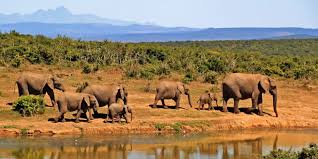
Elephants at Marsabit National Park. Residents have been urged to actively participate in the wildlife Bill 2025. Photo: KWS.
State Department of Wildlife is organizing a public engagement event on the Wildlife Conservation and Management Amendment Bill 2025. It is an event that has been organized at the Catholic church hall in Marsabit town, Friday, May 23.
This is due to wildlife conservation efforts being hampered by many challenges such as human-wildlife conflicts, climate change, and unequal distribution of benefits.
Deputy Director State Department of Wildlife Kabaka Mukonyi, said that the views of the Marsabit people will be included in the report that will be officially released later, as it will inform and improve the new law under amendment.
“Everyone’s view will be considered and inform the next process we take. As you have been told, we still have enough time and organize yourselves and submit your input after understanding, so as to improve on what is to be done,” Mukonyi said.
According to him, the law aims to modernize conservation, improve community benefits, and ensure sustainable wildlife management.
Additionally, the Wildlife Bill 2025 (amendment) aims to harmonize wildlife laws with the Constitution of Kenya (2010), integrate the National Wildlife Policy (2020) and Wildlife Strategy (2030), and clarify roles between national and county governments.
It further aims to amend the existing Wildlife Conservation and Management Act, No. 47 of 2013, primarily to enable joint management and revenue sharing between county governments and the national government concerning national parks.
During a food distribution exercise to IDPs in Saku constituency DCC David Saruni, urged the victims of conflict not to encroach in the parks, after a section them fled their homes and sought refuge in the national park near the Segel area last week, a situation in which KWS and the security department were able to take action to evict these residents.
He called on the Kenya Wildlife Service (KWS), to clear mark the boundaries areas around parks, so that residents can understand the gazette areas and those set for human settlement to further reduce human-wildlife conflict.




